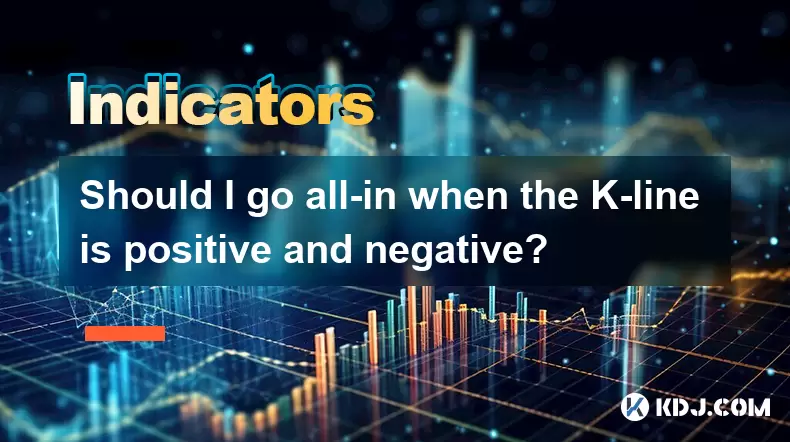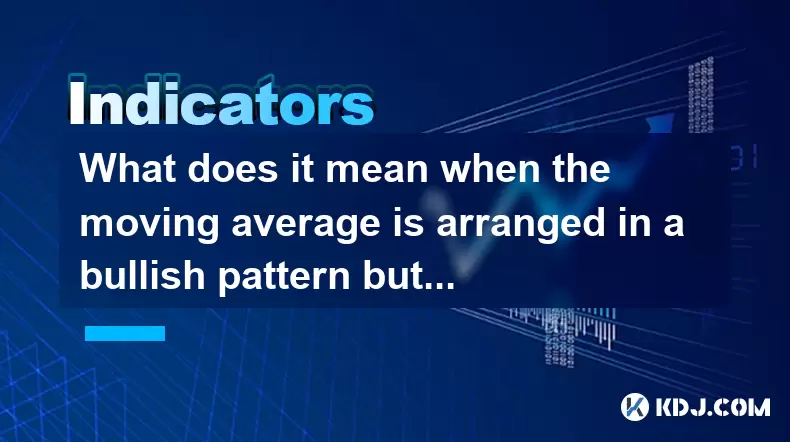-
 Bitcoin
Bitcoin $118000
0.67% -
 Ethereum
Ethereum $3750
0.71% -
 XRP
XRP $3.183
1.61% -
 Tether USDt
Tether USDt $1.000
-0.01% -
 BNB
BNB $788.1
1.21% -
 Solana
Solana $186.0
0.85% -
 USDC
USDC $0.9999
-0.02% -
 Dogecoin
Dogecoin $0.2373
1.25% -
 TRON
TRON $0.3204
1.76% -
 Cardano
Cardano $0.8266
1.85% -
 Hyperliquid
Hyperliquid $44.04
1.28% -
 Sui
Sui $4.192
5.88% -
 Stellar
Stellar $0.4399
2.63% -
 Chainlink
Chainlink $18.40
1.19% -
 Hedera
Hedera $0.2842
9.06% -
 Bitcoin Cash
Bitcoin Cash $560.5
2.46% -
 Avalanche
Avalanche $24.99
4.58% -
 Litecoin
Litecoin $114.5
1.25% -
 UNUS SED LEO
UNUS SED LEO $8.980
-0.03% -
 Shiba Inu
Shiba Inu $0.00001406
0.53% -
 Toncoin
Toncoin $3.306
4.27% -
 Ethena USDe
Ethena USDe $1.001
0.03% -
 Polkadot
Polkadot $4.169
2.37% -
 Uniswap
Uniswap $10.56
1.95% -
 Monero
Monero $322.8
1.06% -
 Dai
Dai $0.0000
0.00% -
 Bitget Token
Bitget Token $4.545
0.12% -
 Pepe
Pepe $0.00001261
1.29% -
 Aave
Aave $296.5
1.27% -
 Cronos
Cronos $0.1379
5.90%
Should I go all-in when the K-line is positive and negative?
A single green or red K-line isn't enough to predict price reversals—always confirm with volume, support/resistance, and indicators like RSI or MACD.
Jul 26, 2025 at 03:35 pm

Understanding the K-Line in Cryptocurrency Trading
The K-line, also known as the candlestick chart, is one of the most widely used tools in cryptocurrency technical analysis. Each candlestick represents price movement over a specific time period and consists of four main components: the open, high, low, and close (OHLC) prices. A positive (green) candle indicates that the closing price is higher than the opening price, signaling bullish sentiment. Conversely, a negative (red) candle means the closing price is lower than the opening price, reflecting bearish momentum.
Traders often interpret sequences of green and red candles to predict future price movements. However, reacting solely to a single green or red candle—especially by going all-in—can be extremely risky. The appearance of a green candle after a series of red ones might suggest a reversal, but without confirmation from volume, support/resistance levels, or other technical indicators, such signals can be misleading.
Dangers of Going All-In Based on a Single K-Line Signal
Entering a full position based on a single positive or negative K-line is a high-risk strategy that disregards essential aspects of risk management. Cryptocurrency markets are highly volatile, and price reversals can occur rapidly. A green candle might form due to a temporary pump or short squeeze, not a sustained uptrend. Similarly, a red candle could be part of a healthy correction in an overall bullish market.
When traders go all-in, they expose 100% of their capital to potential loss. This eliminates the ability to average down if the price drops further or to add to a winning position if the trend continues. Moreover, emotional decision-making increases under such pressure, often leading to panic selling during minor pullbacks. The absence of stop-loss orders or position sizing amplifies the danger.
Instead of committing all funds at once, consider using partial entries based on confirmation signals. For example:
- Wait for two consecutive green candles with increasing volume.
- Confirm that the price has broken above a key resistance level.
- Check alignment with higher time frame trends (e.g., 4-hour or daily charts).
- Use moving averages or RSI to assess overbought or oversold conditions.
How to Properly Interpret K-Line Patterns
Certain candlestick patterns carry more significance than isolated green or red candles. Recognizing these formations can improve trading decisions. Examples include:
- Bullish Engulfing Pattern: A large green candle completely engulfs the body of the previous red candle, suggesting strong buying pressure.
- Hammer: A candle with a long lower wick and small body at the top, often appearing after a downtrend, indicating potential reversal.
- Doji: A candle where the open and close are nearly equal, signaling indecision in the market.
- Shooting Star: A candle with a long upper wick and small body at the lower end, hinting at a potential top.
These patterns are more reliable when they appear at key technical levels. For instance, a bullish engulfing pattern near a historical support zone carries more weight than one appearing in the middle of a range. Always cross-verify with trading volume—a spike in volume during a green candle increases its credibility.
Step-by-Step Risk Management Strategy for K-Line Trading
To trade based on K-line signals without risking your entire portfolio, follow this structured approach:
- Define your risk tolerance: Decide the maximum percentage of your capital you're willing to risk per trade, typically between 1% to 5%.
- Set stop-loss levels: Place a stop-loss just below the low of a bullish candle or above the high of a bearish candle to limit downside.
- Use take-profit zones: Identify nearby resistance (for longs) or support (for shorts) levels to secure profits incrementally.
- Scale in and out: Enter 50% of your intended position after a confirmed signal, then add the rest if the price continues in your favor.
- Monitor multiple time frames: Check the daily chart for trend direction and use the 1-hour or 15-minute chart for precise entry.
This method ensures you're not locked into a single entry point and allows flexibility to respond to market changes.
Tools to Confirm K-Line Signals Before Trading
Relying solely on candlestick color is insufficient. Integrate additional tools to validate your analysis:
- Volume indicators: A green candle accompanied by above-average volume suggests strong buyer participation.
- Moving Averages (MA): If the price is above the 50-day or 200-day MA, the trend is likely bullish.
- Relative Strength Index (RSI): An RSI below 30 may indicate oversold conditions, supporting a bullish reversal.
- MACD (Moving Average Convergence Divergence): A bullish crossover in MACD can confirm upward momentum.
- Support and Resistance Levels: A green candle forming at a known support level increases the probability of a bounce.
Combining these tools with K-line analysis creates a multi-layered confirmation system, reducing false signals.
Frequently Asked Questions
Can a single green K-line indicate a strong buy signal?
A single green candle is not sufficient to justify a strong buy decision. It must be analyzed in context—such as its position within a trend, volume, and surrounding candle patterns. Without confirmation, it could simply be a temporary bounce.
Is it safe to short a cryptocurrency after a red K-line appears?
Shorting based on one red candle is risky. Downturns require confirmation, such as a breakdown below support or bearish divergence on the RSI. Always use stop-losses when shorting due to the potential for sharp rallies.
How do I know if a K-line reversal is genuine?
A genuine reversal is supported by multiple factors: increased volume, confirmation from the next candle, alignment with key technical levels, and consistency with higher time frame trends. Isolated candlesticks are rarely reliable on their own.
Should I use leverage when trading based on K-line patterns?
Leverage magnifies both gains and losses. Given the volatility of crypto markets, using high leverage on K-line-based entries can lead to liquidation, especially if the signal fails. Conservative leverage or no leverage is advisable for beginners.
Disclaimer:info@kdj.com
The information provided is not trading advice. kdj.com does not assume any responsibility for any investments made based on the information provided in this article. Cryptocurrencies are highly volatile and it is highly recommended that you invest with caution after thorough research!
If you believe that the content used on this website infringes your copyright, please contact us immediately (info@kdj.com) and we will delete it promptly.
- Bitcoin Targets New All-Time Highs: Trader's Bullish $127,000 Target
- 2025-07-27 04:50:12
- Bitcoin Price Dip? Smart Investors Buy Crypto Presales Now!
- 2025-07-27 04:30:12
- REI, MDT, Big Gainers: Catching the Crypto Wave in Real Time
- 2025-07-27 04:50:12
- Altcoins on Fire: Sui, Cronos, and the Crypto Market's Next Big Thing
- 2025-07-27 04:55:17
- Riding the AI Token Wave: Is Ruvi AI the Next Big Investment During the Crypto Bull Run?
- 2025-07-27 05:00:12
- XRP, DOGE, RTX: What's Hot and What's Not in the Crypto World?
- 2025-07-27 03:30:12
Related knowledge

What does it mean that the rebound is blocked after the moving average is arranged in a short position for the first time?
Jul 26,2025 at 10:51am
Understanding the Short-Term Moving Average ConfigurationWhen traders refer to a 'short position arrangement' in moving averages, they are describing ...

What does it mean that the parabolic indicator and the price break through the previous high at the same time?
Jul 26,2025 at 07:22pm
Understanding the Parabolic Indicator (SAR)The Parabolic SAR (Stop and Reverse) is a technical analysis tool developed by J. Welles Wilder to identify...

What does it mean that the price falls below the short-term moving average after the RSI top divergence?
Jul 26,2025 at 11:01pm
Understanding RSI Top Divergence in Cryptocurrency TradingThe Relative Strength Index (RSI) is a momentum oscillator widely used in cryptocurrency tra...

What does it mean when the moving average is arranged in a bullish pattern but the MACD bar is shortened?
Jul 27,2025 at 06:07am
Understanding the Bullish Moving Average PatternWhen traders observe a bullish moving average pattern, they typically refer to a configuration where s...

What does it mean when the price rises along the 5-day moving average for five consecutive days?
Jul 26,2025 at 08:07am
Understanding the 5-Day Moving Average in Cryptocurrency TradingThe 5-day moving average (5DMA) is a widely used technical indicator in cryptocurrency...

What does it mean when ADX breaks through 25 and +DI continues to rise?
Jul 26,2025 at 07:00pm
Understanding the ADX Indicator and Its ThresholdsThe Average Directional Index (ADX) is a technical analysis tool used to measure the strength of a t...

What does it mean that the rebound is blocked after the moving average is arranged in a short position for the first time?
Jul 26,2025 at 10:51am
Understanding the Short-Term Moving Average ConfigurationWhen traders refer to a 'short position arrangement' in moving averages, they are describing ...

What does it mean that the parabolic indicator and the price break through the previous high at the same time?
Jul 26,2025 at 07:22pm
Understanding the Parabolic Indicator (SAR)The Parabolic SAR (Stop and Reverse) is a technical analysis tool developed by J. Welles Wilder to identify...

What does it mean that the price falls below the short-term moving average after the RSI top divergence?
Jul 26,2025 at 11:01pm
Understanding RSI Top Divergence in Cryptocurrency TradingThe Relative Strength Index (RSI) is a momentum oscillator widely used in cryptocurrency tra...

What does it mean when the moving average is arranged in a bullish pattern but the MACD bar is shortened?
Jul 27,2025 at 06:07am
Understanding the Bullish Moving Average PatternWhen traders observe a bullish moving average pattern, they typically refer to a configuration where s...

What does it mean when the price rises along the 5-day moving average for five consecutive days?
Jul 26,2025 at 08:07am
Understanding the 5-Day Moving Average in Cryptocurrency TradingThe 5-day moving average (5DMA) is a widely used technical indicator in cryptocurrency...

What does it mean when ADX breaks through 25 and +DI continues to rise?
Jul 26,2025 at 07:00pm
Understanding the ADX Indicator and Its ThresholdsThe Average Directional Index (ADX) is a technical analysis tool used to measure the strength of a t...
See all articles

























































































